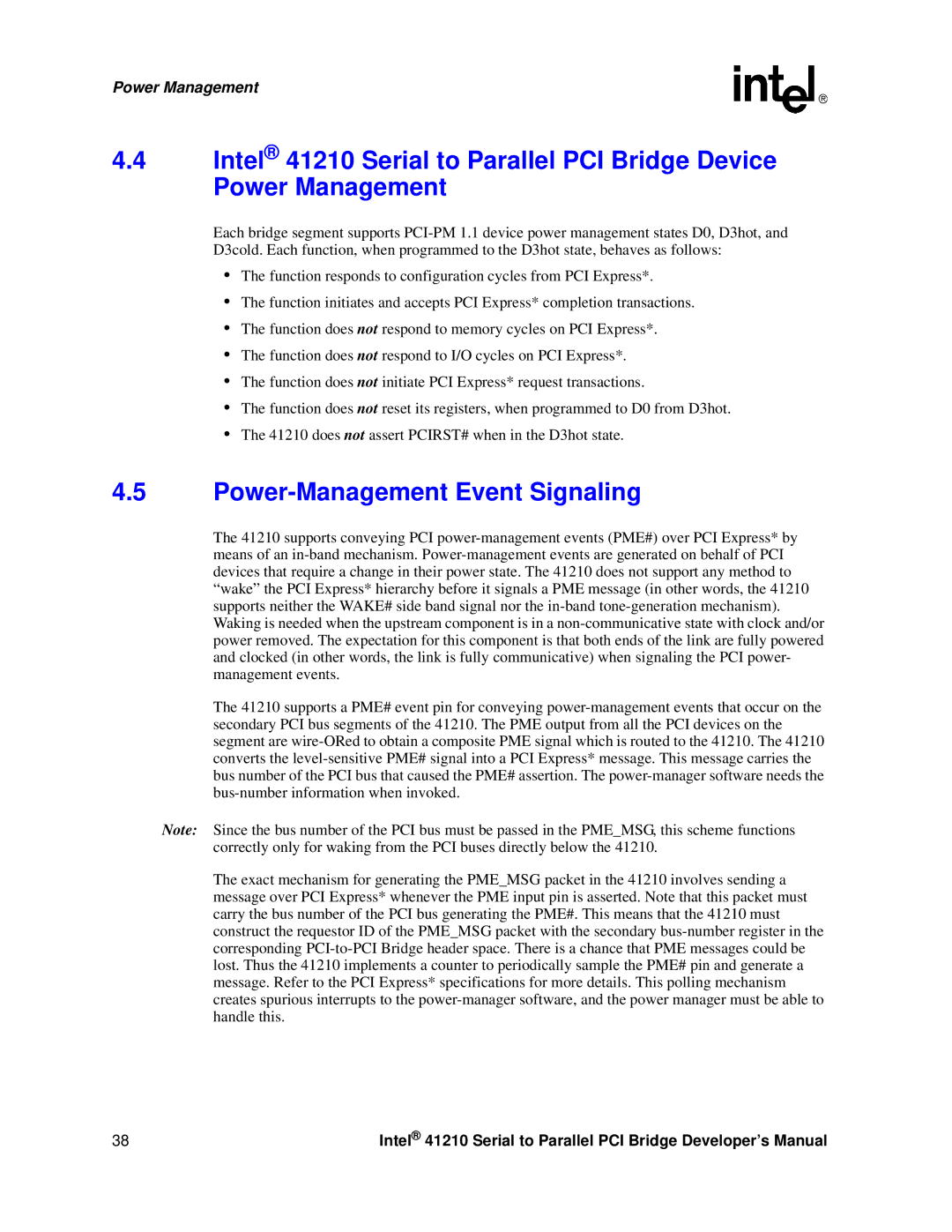Power Management
4.4Intel® 41210 Serial to Parallel PCI Bridge Device Power Management
Each bridge segment supports
•The function responds to configuration cycles from PCI Express*.
•The function initiates and accepts PCI Express* completion transactions.
•The function does not respond to memory cycles on PCI Express*.
•The function does not respond to I/O cycles on PCI Express*.
•The function does not initiate PCI Express* request transactions.
•The function does not reset its registers, when programmed to D0 from D3hot.
•The 41210 does not assert PCIRST# when in the D3hot state.
4.5Power-Management Event Signaling
The 41210 supports conveying PCI
The 41210 supports a PME# event pin for conveying
Note: Since the bus number of the PCI bus must be passed in the PME_MSG, this scheme functions correctly only for waking from the PCI buses directly below the 41210.
The exact mechanism for generating the PME_MSG packet in the 41210 involves sending a message over PCI Express* whenever the PME input pin is asserted. Note that this packet must carry the bus number of the PCI bus generating the PME#. This means that the 41210 must construct the requestor ID of the PME_MSG packet with the secondary
38 | Intel® 41210 Serial to Parallel PCI Bridge Developer’s Manual |
